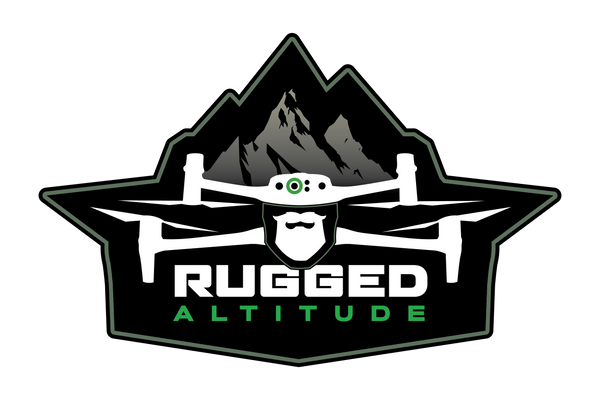Case Studies: Successful Wildlife Recovery Missions with Drones
Share
In recent years, the use of drones in wildlife recovery has transformed how conservationists and wildlife managers approach the challenges of protecting endangered species and rehabilitating injured animals. At Rugged Altitude, we specialize in providing aerial support for wildlife recovery operations where ground access may be limited or ineffective. This article explores several case studies that exemplify the innovative applications of drone technology in wildlife recovery missions.
Case Study 1: Tracking Endangered Sea Turtles
One of our most profound experiences involved assisting a marine biology team focused on tracking endangered sea turtle populations in a remote coastal region. Sea turtles are notorious for their sprawling habitats, often moving between feeding and nesting grounds that stretch over vast distances.
Using thermal and high-resolution cameras mounted on our drones, we were able to locate and monitor several nests that had previously gone undetected. The drones flew at a safe altitude, capturing crucial data without disturbing the nesting turtles. This data was then used to develop an effective conservation strategy aimed at protecting these vulnerable populations.
Case Study 2: Monitoring Forest Wildlife
Another notable mission took place in a national forest, where wildlife managers sought to assess the health of various animal species following a severe wildfire. Ground assessments can be tedious and time-consuming in rugged terrains, making drones an ideal option for the task.
Our team deployed drones equipped with multispectral sensors to collect data on the forest's regrowth and animal movement patterns. The aerial view enabled us to identify hotspots of activity and areas where wildlife was congregating, providing invaluable insights to conservationists for future recovery plans.
Case Study 3: Surveying Animal Populations
In a unique collaboration with a local wildlife reserve, we undertook a project aimed at surveying large animal populations, such as deer and elk, over a sprawling landscape. Traditionally, wildlife managers would conduct aerial surveys using manned aircraft, which are costly and less efficient.
By utilizing our drone fleet, we significantly reduced operational costs and increased data accuracy. Drones equipped with advanced cameras allowed us to capture high-resolution images of the animals without causing stress or disrupting their natural movements. The resulting data was crucial for the reserve's population management strategies.
Case Study 4: Essential Search and Rescue Operations
Beyond wildlife recovery, drones have also played a crucial role in search and rescue operations for injured or lost animals. In one instance, our team was called to assist in locating a lost hiker in a remote mountainous area, known to have dangerous wildlife such as bears and wolves.
Utilizing our drones’ thermal imaging capabilities, we were able to comb through dense forests and rugged terrains quickly. Within hours, we located the hiker, who had also encountered a distressed bear cub. Thanks to the aerial support, not only was the hiker rescued, but the wildlife was also monitored to ensure their safety and well-being.
Benefits of Using Drones in Wildlife Recovery
The benefits of using drones for wildlife recovery missions are numerous. Here are some key advantages:
- Access: Drones can navigate hard-to-reach terrains, providing access to areas that are otherwise dangerous or infeasible for ground teams.
- Data Collection: Equipped with high-resolution cameras, thermal imaging, and multispectral sensors, drones gather data efficiently and accurately, enabling comprehensive wildlife assessments.
- Cost-Effectiveness: Drones minimize the need for manned aircraft and extensive ground surveys, significantly reducing costs associated with wildlife monitoring.
- Minimized Disturbance: Drones can observe wildlife from a distance, reducing stress on animals and allowing for more natural behaviors to be documented.
Challenges Faced in Drone Operations
While drone technology has greatly advanced in recent years, several challenges still exist when implementing drone operations for wildlife recovery:
- Regulatory Restrictions: Navigating the complex regulatory landscape for drone usage can pose challenges, especially in protected areas.
- Technical Limitations: Weather conditions and battery life can limit operational capabilities, particularly in remote regions.
- Data Interpretation: Analyzing and interpreting the data collected by drones requires specialized skills and training that may not always be available on-site.
Conclusion
The case studies presented illustrate the vast potential of drones in wildlife recovery operations. As we continue to embrace technological advancements, the opportunities for innovative solutions to conservation challenges are limitless. At Rugged Altitude, we are committed to leveraging aerial technologies to provide reliable support for wildlife recovery, offering new possibilities for researchers, conservationists, and property managers alike.
For anyone involved in wildlife conservation or management, integrating drones into their operations can lead to enhanced decision-making, better resource management, and ultimately, a positive impact on wildlife populations. Join us at Rugged Altitude as we continue to explore new frontiers in conservation through specialized drone services.
